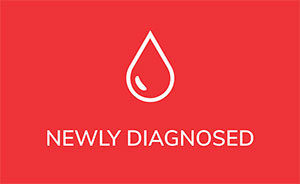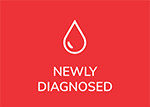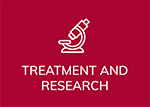
By Susan J. Leclair, PhD, CLS (NCA)
Specific Response or Adaptive Immunity
In this article we will review the specific defense system or the immune response. For those of you who like history, this system was first clarified in the 1960s, so our knowledge of it and its functions has grown by leaps and bounds. It is not a surprise that just explaining how it worked was worth a Nobel prize. If you need time for a review or a first read of “Introduction to Immunity”, please visit the first part of this article here.
The specific response is what most people think of as immunity. In this process, the antigen in question is manipulated by those phagocytes from the nonspecific defense and presented to the T lymphocytes and B lymphocytes for their action. By this, I mean that the T cell will accept the modified foreign material and then decide what is the best path of action. T cells will secrete cytokines and interleukins which can kill or neutralize on touch (think a kind of chemical poison) and can stimulate B cells to make antibodies.
If the B lymphocyte is stimulated, it will begin to make antibodies that are based on the type of antigen present and the route in which the body has been exposed to the antigen (skin abrasions, via the blood stream, etc.) First, the B cells will typically make IgM, a large, rather bulky antibody which is very active in binding to the antigen and clearing it from the system. It is made within several days of exposure but does not have a sufficient concentration until after ~4-6 days when, in a typical viral infection, you begin to feel “better”. The next antibody to be made is IgG which finishes up the defense against the antigen. A third form of antibody, IgA, is made if the antibody will be active in body fluids such as saliva. There are two additional antibodies, but for the sake of time, we will not deal with them in this article. One decision by the B cell is whether to keep making a lower concentration of antibody throughout life or to simply remember how to make the antibody, if or when needed.
For example, when you were first born, you had no antibodies to the blood groups A, B and O. As you started to eat and interact with the environment, your lymphocytes recognized these antigens as foreign to the blood stream and determined that these antigens are highly common in your food and in the general environment, so the best defense was to make and keep making the antibodies for your entire life.
TESTING
Antigen
Most antigens are proteins. They can also be lipids or lipoproteins. They need to be large enough to “catch” the attention of both the nonspecific and specific immune response.
Even though SARS-CoV-2 has been found in many different locations within the body, the viral load is higher and therefore easier to detect in the nasopharynx and in the lower respiratory tract sites. The virus, SARS-CoV-2, is also found in intestinal tract and blood. The intestinal tract specimen is frequently “used” when a site, for example, a college campus, tests the sewerage from that site. A general rule for the testing of most viral infections is that the viral load is at its highest at the onset of disease and then lessens as disease progresses, so it is important to get tested as soon as possible.
The best test out there for the detection of the viral antigen is called molecular detection using polymerase chain reaction (PCR), another Nobel prize winner. It is quite sensitive and precise (usually only one specific antigen will react) but with every advantage, you get a disadvantage. And the disadvantage of this method is time. It typically takes hours to perform the test. The length of time is not inclusive of getting the specimen (collected correctly, one hopes), transport, and storage. Given the modern supply chain process and the high demand for testing, many laboratories frequently run out of the reagents and materials necessary for the test, resulting in even longer delays. There are also rapid tests that look for the antigen, but they range from excellent to poor in sensitivity, so there is a possibility of false results, both positive and negative. These rapid tests will be used frequently if a site or group wants to screen students or employees on a regular basis.
Antibody Testing
Antibody testing can be divided into several areas. Issues of concern include:
- How immunocompetent is the immune system?
- How long does it take for antibody formation to occur?
- What is the duration of antibody protection?
- Are these antibodies protective or just recognition?
Immunocompetence fades as one ages, irrespective of any conditions or medications.
This translates out to a less powerful, slower-to-work response of both the nonspecific and specific defense. In addition, various conditions can also lessen the ability of your defenses to respond. For example, people with poorly controlled type II diabetes have cells that cannot move as fast or work as hard as regular cells since they cannot manipulate the glucose that they need to function. Another example would be people with allergies that require immunosuppressive agents. Listen to the various ads on the media and pay attention to the side effects that they rush through. The inclusion of infections, poor wound healing, or reactivation of prior infections all speak to a lessening of an individual’s immune system functionality. A third example would be not having adequate rest or nutrition, conditions that also affects immunocompetence.
As mentioned earlier, it takes time for antibodies to be made in sufficient numbers to effectively work against a foreign antigen. On average, with a good immune system, IgM will achieve effectiveness in about a week and IgG in about 3 weeks. The antibody production duration will depend on the antigen and the potential of frequent exposures.
The next article discusses “those whose immune system is less than it was when they were in their teens and healthy.” The last in this series on the immune system will highlight immunocompetence and situations when it doesn’t work that well.
Susan Leclair, PhD, CLS (NCA) is Chancellor Professor Emerita at the University of Massachusetts Dartmouth; Senior Scientist, at Forensic DNA Associates; and Moderator and Speaker, PatientPower.info – an electronic resource for patients and health care providers.

















